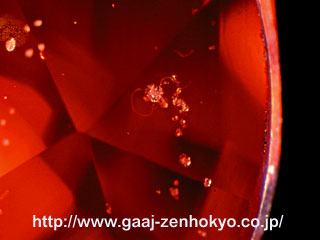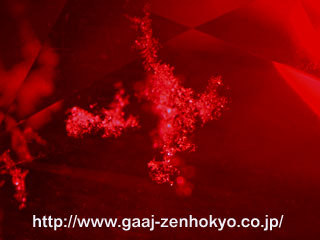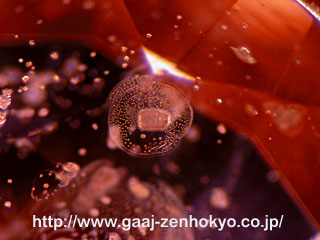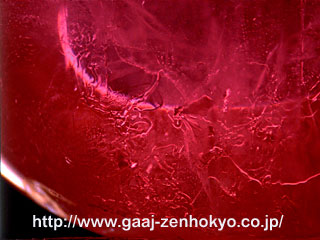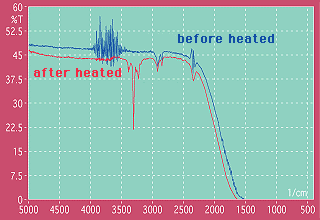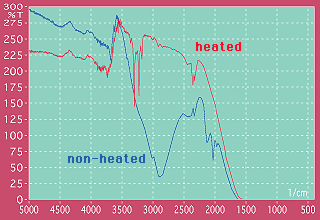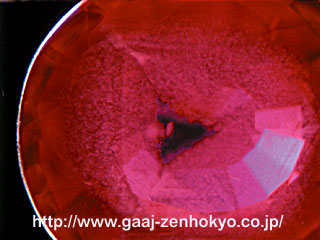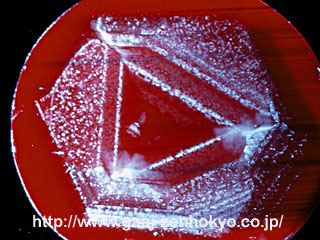|
|||||||||||||||||||||||||||||||||||
This report is based on a lecture addressed at gGemmological Society of Japanh 2005, conference partly added and altered. ♦ Introduction In accordance with the revision of regulation on the expression on identification reports last September, AGL (Association of Gemmological Laboratories Japan) started to make individual description about heating on corundum. This new regulation resulted in giving further task to laboratories of AGL members, because only a comment gcorundum is generally enhancedh used to be described in a memo section on the identification report, and corundum was not tested individually to indicate the heating / non-heating status. After the enforcement of the new regulation, despite indefinable concern, no big confusion occurred, however, there were some reports that different results on heating / non-heating status were seen between some gem laboratories (especially overseas). In this report we discuss the background of such situation and introduce identification techniques for heated / non-heated stones. ♦ Features of heat treated corundum Features seen under magnification observation Detailed observation of internal features is very important to identify heat treated corundum. As many crystal inclusions have lower melting point than the host mineral corundum, they may melt or discolour by heating process. Silk inclusion, which is almost always seen in corundum, is actually needle-like crystal of rutile, whose melting point is relatively high at 1825ºC and it starts to melt at 1640ºC. However, type of atmosphere and other conditions in heating process may cause variation in temperature at which the crystal actually melts. Some needle-like crystals that accepted no damage during heating despite high temperature heat treatment such as Be-diffusion heat treatment do exist. Recent research in Korea shows that a part of needle-like inclusion has a structure of ulvospinel (SANG-KI-KIM, personal communication 2005), which might be a mineral that does not melt at the temperature even higher than the melting point of rutile. @@Zircon is also one of commonly included minerals in corundum. Zircon inclusion has been regarded as a characteristic feature of the sapphire from Sri Lanka, but today it is rather that of stones from Madagascar. Zircon crystal that is included in non-heated corundum has high transparency and often shows halo fissure. The crystal reduces its transparency by heating and turns into chalky white (photo 1). Ruby from Madagascar often shows aggregate of granular zircon crystal inclusion (photo 2). These crystals remain as transparent in corundum, which has been determined as gheatedh by other observation results, and this proves that heating temperature was relatively low.
@@Apatite is a crystalline mineral often seen in sapphire from Madagascar and Sri Lanka. It may show hexagonal prismatic euhedral form, but usually it shows colourless transparent etched form. Apatite is a mineral with relatively low melting point and it changes the form by heating more prominently than other crystalline mineral in corundum (photo 3). Negative crystal is regarded as a type of liquid inclusions. It is a void in a crystal filled with liquid, and those which show two-phase (liquid that is containing gas) are thought to prove that the stone has not been heated. @@Liquid inclusion is often healed by heating under high temperature (over 1000ºC?) and some substances such as flux including borax that are needed for heating may be observed in fractures as residues (photo 4). Such residues are often seen in ruby from Mong-Hsu district in Myanmar.
Features seen in spectral analyses Spectra in UV-visible and infrared region will show variation after heating. In general, when geuda stones from Sri Lanka or Madagascar are heated, their spectra show deeper absorption in yellow and better transparency in UV region. A shoulder (a small absorption) near 330nm often disappears by heating. @@Unheated blue sapphires with non-basaltic origin such as from Sri Lanka, Myanmar or Madagascar generally show no characteristic absorption in infrared region. Contrary to this, blue sapphires with basaltic origin such as from Thailand, Cambodia, Australia or China show absorption near 3000cm-1 that is related to OH banding. Blue sapphire that was heated in reducing atmosphere shows absorption originates in OH banding after heating, which was not seen before the heat treatment (Fig 1). On the other hand, when blue sapphire from basaltic origin showing OH-related absorption is heated in oxidising atmosphere, the peak derived from OH banding reduces or disappears. Thus, FTIR analysis on blue sapphires with known approximate locality becomes extremely effective for identification of heating / non-heating status. @@In unheated ruby from Mong-Hsu district, Myanmar, absorptions by diaspore are observed. They started to disappear gradually by heating while absorptions of OH that is bonded in the structure start to appear. From this fact, rubies from Mong-Hsu district showing distinctive OH peaks can be determined as heated (Fig 2).
Several years ago, a large number of rubies from Mong-Hsu district with identification reports issued by a laboratory overseas stating that the stones showed gno indication of heatingh were brought into Japanese market. However, some of them were actually heated and this caused different opinions between domestic lab and overseas lab. The reason of this discrepancy can be explained as follows: @@Rough crystal of ruby from Mong-Hsu district contains deep-blue section in the centre and this spoils appearance of the stone. Heat treatment is performed mainly to remove this blue section and some laboratories overseas determined to identify stones showing such blue colour zoning under magnification as unheated (photo 5a). However, in more than a few cases stones with such blue colour zoning distinctly indicated trace of heating in infrared spectral analysis or laser tomography (photo 5b,c). After that, with experiments on heat treatment, major international laboratories recognised that the existence of blue colour zoning cannot be a proof of unheated status by itself only.
|
|||||||||||||||||||||||||||||||||||
|
|||||||||||||||||||||||||||||||||||
